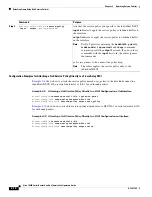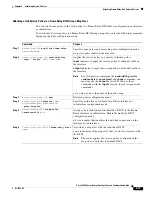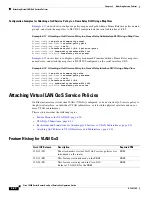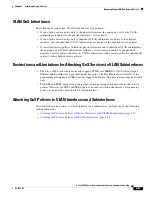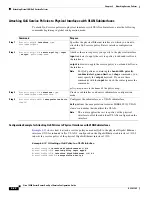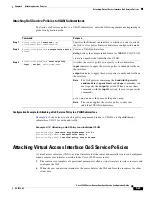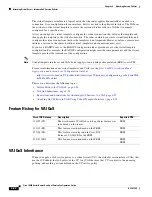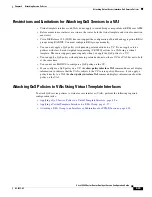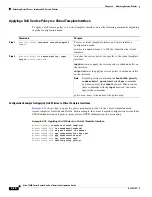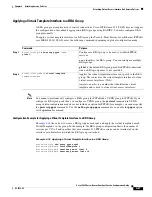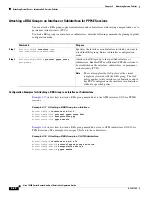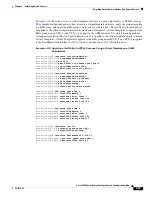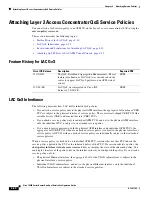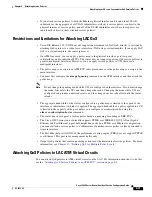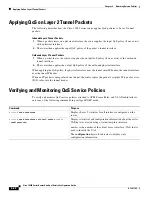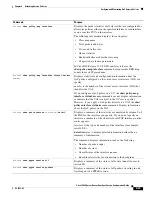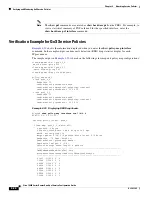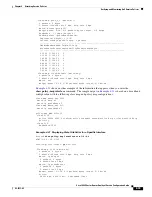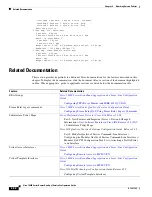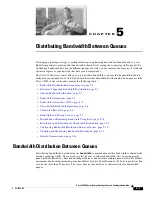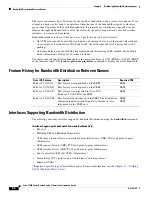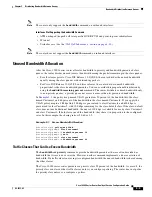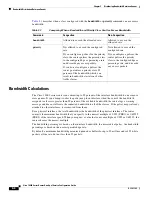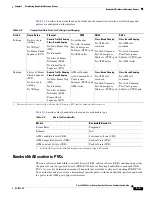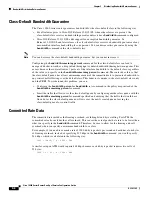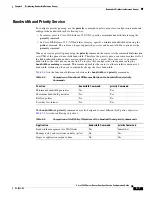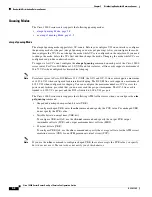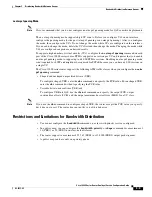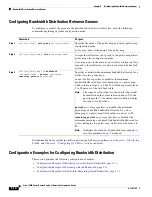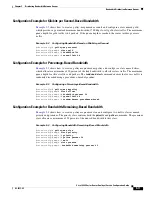
4-32
Cisco 10000 Series Router Quality of Service Configuration Guide
OL-7433-09
Chapter 4 Attaching Service Policies
Applying QoS on Layer 2 Tunnel Packets
Applying QoS on Layer 2 Tunnel Packets
The following describes how the Cisco 10000 series router applies QoS policies to Layer 2 tunnel
packets:
Inbound Layer 2 Tunnel Packets
1.
When a packet arrives on a physical interface, the router applies the input QoS policy (if one exists)
of the physical interface.
2.
The router then applies the input QoS policy of the packet’s tunnel interface.
Outbound Layer 2 Tunnel Packets
1.
When a packet leaves the router, it applies the output QoS policy (if one exists) of the outbound
tunnel interface.
2.
The router then applies the output QoS policy of the outbound physical interface.
When applying the QoS policy, the physical interface uses the tunnel outer IP header; the tunnel interface
uses the inner IP header.
When an IP packet is encapsulated in a tunnel, the router copies the packet’s original IP type of service
(ToS) value into the tunnel header.
Verifying and Monitoring QoS Service Policies
To verify and monitor QoS service policies attached to ATM, Frame Relay, and VLAN subinterfaces,
enter any of the following commands in privileged EXEC mode:
Command
Purpose
Router#
show interface
Displays Layer 2 statistics for all interfaces configured on the
router.
Router#
show interfaces virtual-access
number
[
configuration
]
Displays statistical and configuration information about the active
VAI that was created using a virtual template interface.
number
is the number of the virtual access interface (VAI) that is
used to identify the VAI.
The
configuration
keyword indicates to display only
configuration information.

